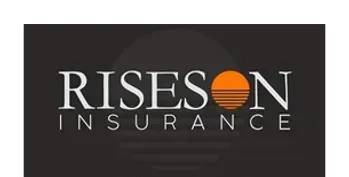
Understanding Slip-and-Fall Accidents
September 8, 2024 | Insurance
Slip-and-fall accidents are among the most common causes of injury, affecting people of all ages. These accidents can occur anywhere, from workplaces to shopping centers, and even at home. Understanding the causes, prevention strategies, and the role of insurance in managing the aftermath is crucial for both individuals and business owners.
A slip-and-fall accident occurs when someone slips, trips, or falls due to hazardous conditions, resulting in an injury. These conditions can include wet floors, uneven surfaces, poor lighting, or obstacles in walkways. While some falls result in minor injuries, others can lead to serious consequences such as fractures, sprains, and head injuries.
Understanding the common causes of slip-and-fall accidents can help in their prevention:
Wet or Slippery Floors: Spills, cleaning, or weather conditions can create slippery surfaces. Uneven Surfaces: Cracked sidewalks, loose tiles, or uneven flooring can cause trips and falls. Obstacles: Items left in walkways, such as cables, boxes, or debris, can create tripping hazards. Poor Lighting: Insufficient lighting can make it difficult to see hazards, increasing the risk of falls. Weather Conditions: Ice, snow, or rain can create slippery outdoor surfaces.
To reduce the risk of slip-and-fall accidents, individuals can take several proactive steps:
Wear Appropriate Footwear: Choose shoes with good traction and support. Be Aware of Your Surroundings: Pay attention to where you are walking and watch for potential hazards. Use Handrails: When available, use handrails on stairs and ramps for added stability. Keep Walkways Clear: Ensure that walkways are free of clutter and obstacles. Report Hazards: Inform property owners or managers about potential hazards, such as wet floors or damaged walkways.
Business owners have a responsibility to maintain a safe environment for their employees and customers. Here are some tips to prevent slip-and-fall accidents:
Regular Inspections: Conduct regular inspections of the premises to identify and address potential hazards. Prompt Cleanup: Quickly clean up spills and wet areas, and place warning signs when necessary. Maintain Flooring: Repair any damaged or uneven flooring promptly. Adequate Lighting: Ensure that all areas, both indoors and outdoors, are well-lit. Employee Training: Train employees on safety practices and encourage them to report hazards.
If a slip-and-fall accident occurs on your property, you could be held liable for the injured party’s medical expenses, lost wages, and other damages. To mitigate liability risks, it’s important to:
Document Incidents: Keep detailed records of any slip-and-fall incidents, including the circumstances and any actions taken. Maintain Insurance: Ensure that you have adequate liability insurance to cover potential claims. Follow Safety Regulations: Adhere to local safety regulations and standards to demonstrate due diligence in maintaining a safe environment.
Insurance plays a crucial role in managing the financial impact of slip-and-fall accidents. Here are some types of insurance that can help:
General Liability Insurance : This covers legal fees, medical expenses, and damages if someone is injured on your property. Workers’ Compensation Insurance : If an employee is injured in a slip-and-fall accident at work, workers’ compensation can cover their medical expenses and lost wages. Homeowners Insurance : For homeowners, this insurance can provide coverage if a guest is injured in a slip-and-fall accident on your property.
Slip-and-fall accidents can happen to anyone, anywhere. By understanding the common causes and taking proactive steps to prevent them, both individuals and business owners can reduce the risk of these accidents. Additionally, having the right insurance coverage is essential to protect against the financial and legal consequences of slip-and-fall accidents.
At Riseson Insurance , in Tempe , Arizona , we are dedicated to helping you understand and manage your risks. If you have any questions about your insurance coverage or need assistance in finding the right policy, don’t hesitate to reach out to us.
What Are Slip-and-Fall Accidents?
Common Causes of Slip-and-Fall Accidents
Prevention Tips for Individuals
Prevention Tips for Business Owners
Liability and Legal Considerations
The Role of Insurance
Conclusion
- Wet or Slippery Floors: Spills, cleaning, or weather conditions can create slippery surfaces.
- Uneven Surfaces: Cracked sidewalks, loose tiles, or uneven flooring can cause trips and falls.
- Obstacles: Items left in walkways, such as cables, boxes, or debris, can create tripping hazards.
- Poor Lighting: Insufficient lighting can make it difficult to see hazards, increasing the risk of falls.
- Weather Conditions: Ice, snow, or rain can create slippery outdoor surfaces.
- Wear Appropriate Footwear: Choose shoes with good traction and support.
- Be Aware of Your Surroundings: Pay attention to where you are walking and watch for potential hazards.
- Use Handrails: When available, use handrails on stairs and ramps for added stability.
- Keep Walkways Clear: Ensure that walkways are free of clutter and obstacles.
- Report Hazards: Inform property owners or managers about potential hazards, such as wet floors or damaged walkways.
- Regular Inspections: Conduct regular inspections of the premises to identify and address potential hazards.
- Prompt Cleanup: Quickly clean up spills and wet areas, and place warning signs when necessary.
- Maintain Flooring: Repair any damaged or uneven flooring promptly.
- Adequate Lighting: Ensure that all areas, both indoors and outdoors, are well-lit.
- Employee Training: Train employees on safety practices and encourage them to report hazards.
- Document Incidents: Keep detailed records of any slip-and-fall incidents, including the circumstances and any actions taken.
- Maintain Insurance: Ensure that you have adequate liability insurance to cover potential claims.
- Follow Safety Regulations: Adhere to local safety regulations and standards to demonstrate due diligence in maintaining a safe environment.
- General Liability Insurance : This covers legal fees, medical expenses, and damages if someone is injured on your property.
- Workers’ Compensation Insurance : If an employee is injured in a slip-and-fall accident at work, workers’ compensation can cover their medical expenses and lost wages.
- Homeowners Insurance : For homeowners, this insurance can provide coverage if a guest is injured in a slip-and-fall accident on your property.
